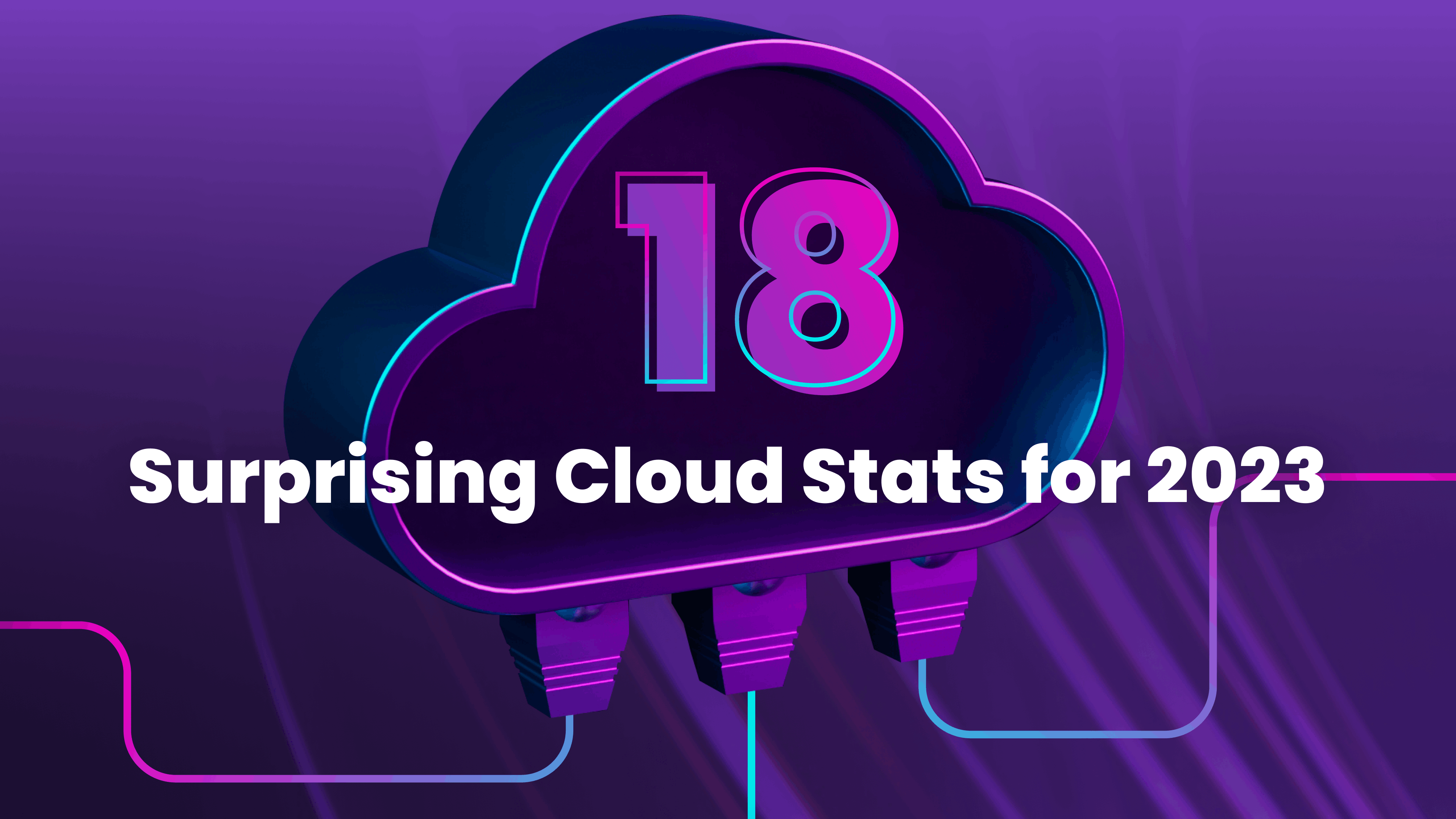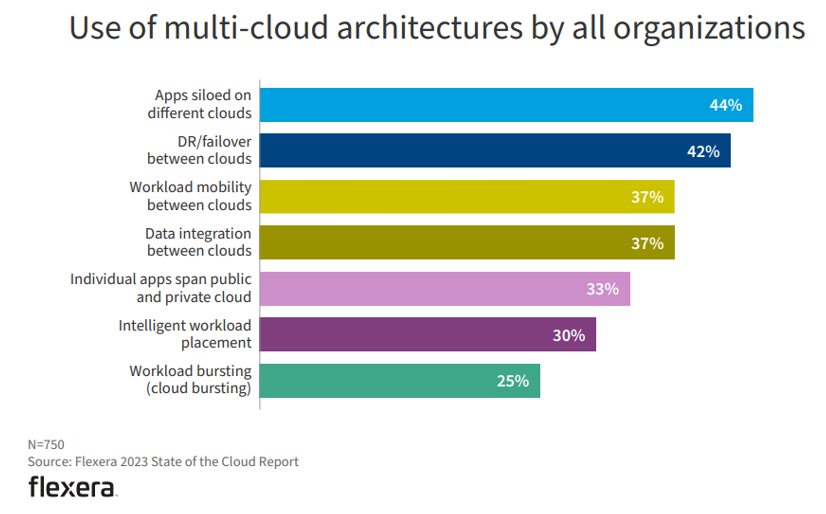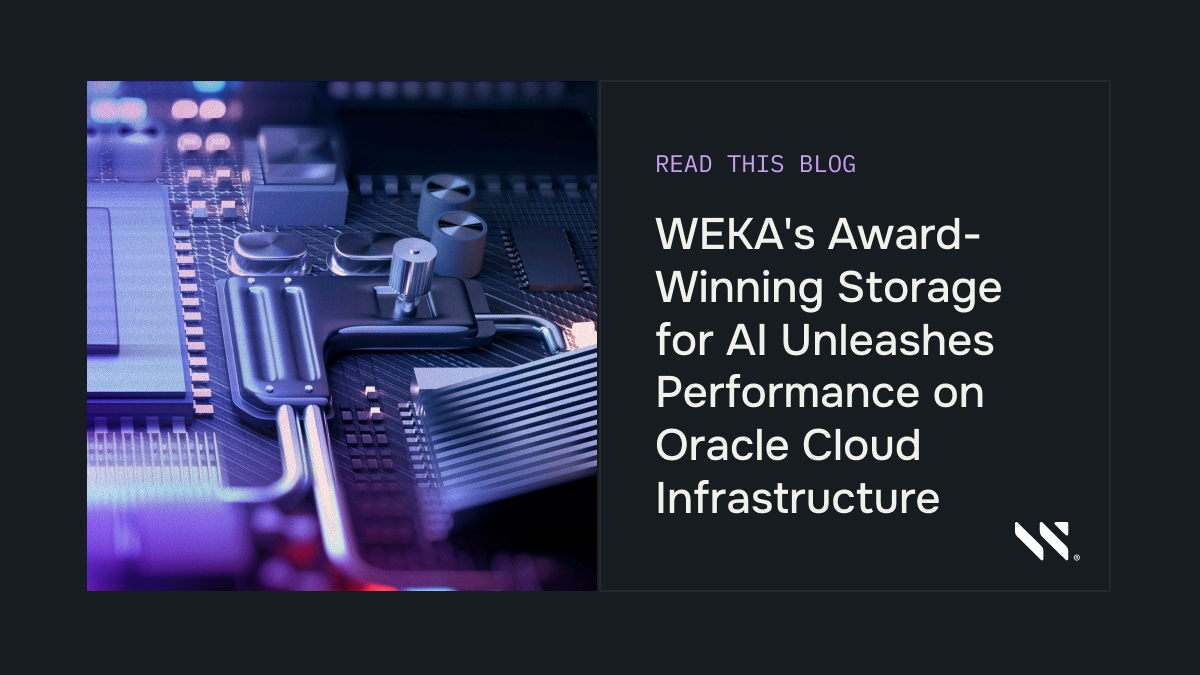Is Data Storage Holding Cloud Adoption Back? 18 Surprising Cloud Stats for 2023

To cloud or not to cloud? We’re seeing that question pop up in tech news and in industry discussions lately, so we wanted to take a look at the stats swirling around cloud adoption, challenges, and opportunities to give you our take on the current landscape for enterprise cloud. In this post, we dive into the latest data to see what’s really impacting enterprise cloud journeys in 2023.
Hybrid and multi-cloud remain the norm for most organizations.
- 87% of them use multiple clouds (Flexera, 2023)
- 72% of them use hybrid cloud (Flexera, 2023)
Multi-cloud adoption is central to mitigating vendor lock-in concerns.
- 80% of enterprises cite managing multicloud as a top cloud challenge (Flexera, 2023)
- 50% of organizations use multicloud to mitigate vendor lock-in (Foundry, 2022)
- DR/Failover, Workload mobility, and cloud interoperability are increasing in importance (Flexera, 2023)

Our take: A winning cloud strategy enables flexibility to choose the best deployment model for their workloads. Organizations will continue to run their workloads using a mixture of on-premises data centers and multiple clouds (two to three clouds are the norm). With diverse requirements driving hybrid and multi-cloud architectures, there can be no ‘best of both worlds’ or ‘one-size-fits-all’ approach. Customers will evolve their cloud strategy by balancing their unique requirements for specific workloads with the need for a more cohesive overall strategy that balances feature sets, performance, costs, and business risks. The best foundation for a winning cloud strategy is one that gives organizations the flexibility to choose the best deployment model for their workloads, whether they run on-premises, at the edge, in the cloud or in hybrid or multi-cloud configurations.
Most organizations struggle to control costs in the cloud.
- 82% of them say managing cloud spend is their top challenge – surpassing security for the first time in a decade (Flexera 2023)
- 74% of them now use cost savings as a main cloud success metric (Flexera, 2023)
- 49% of them say they struggle to control costs in the cloud (CloudZero, 2022)
- Only 3 out of 10 of them know where their cloud costs are going (CloudZero 2022)
A key driver of the cloud’s spiraling costs is resource waste.
- 75% of organizations reported an increase in cloud waste in 2022 (CloudZero, 2022)
Most organizations haven’t implemented the tools they need to manage resource waste.
- Only 48% of them use automated monitoring to optimize cloud costs (Flexera, 2023)
- Only 34% of them eliminate inactive storage (Flexera, 2023)
- Only 45% of them use the autoscaling process (Flexera, 2023)
Our Take: Resource optimization is a major untapped opportunity for most organizations to control cloud costs. Most organizations struggle to manage costs in the cloud. Employing a multi-cloud strategy was supposed to ease this pain point, but it’s unclear whether it’s having an impact yet. Many customers continue to be surprised by the bill from their cloud provider(s) and are actively seeking ways to get better visibility and control over costs. Beyond limited visibility, one of the primary sources of spiraling cloud costs is resource waste, particularly for storage, computing, networking, and database resources. Many customers are not yet using all the tools available to help them optimize their cloud use and minimize waste. These include reserved instances, autoscaling, resource tagging, instance rightsizing, and utilization monitoring. A data platform that easily scales up or down, and that can scale capacity and performance independently, will become table stakes for many organizations to help manage resource utilization and minimize waste.
A major driver of the hybrid/multicloud strategy is a “best fit for my workload” approach.
- 50% of organizations indicated that improving operational scalability was the most significant factor driving their hybrid/multicloud strategy (451 Group VotE Hybrid/multicloud 2022)
- 46% of organizations stated business agility & innovation (451 Group VotE Hybrid/multicloud 2022)
- 34% of organizations indicated that improving application performance is the most significant challenge for their hybrid/multicloud strategy (451 Group VotE Hybrid/multicloud 2022)
Our Take: Improved storage performance is table stakes for enabling next-gen workloads in the cloud. Performance has been and remains a major driver for choosing a cloud provider for a given workload. In addition, customers continue to find that the performance of many native cloud storage systems lags behind their on-premises counterparts. Where cloud storage systems do perform well, they are often much more expensive, so customers struggle to justify the ROI of the cloud for performance-intensive workloads. Customers are looking for an alternative data platform that delivers on-prem performance with cloud scaling and economics, helping them eliminate the trade-off between great performance and affordable economics.
Shared data enables collaborative workflows.
- 60% of the world’s corporate data is stored in the cloud (Thales)
- $7.1B was the amount customers spent on data pipeline and data ops tools in 2021, 24.5% CAGR from 2022 through 2030 (Grandview Research)
Our Take: Hybrid cloud workflows require a new approach to data management. Many organizations now have distributed teams that require fast, secure access to data from anywhere in the world and across multiple applications. Further, next-generation applications moving to the cloud often leverage datasets with multiple stakeholders performing analysis or edits across a data pipeline. Follow the sun development models are being adopted by data analysts and content creators, who require real-time access to the latest data in the pipeline. A data platform that supports every application type and every performance profile is needed so customers can seamlessly and efficiently collaborate on a single data copy.
Conclusion
Making smart decisions about your underlying compute, networking, and storage infrastructure is critical to successfully deploy performance-intensive workloads in the cloud. The right choices can accelerate your journey, while a poor decision can stop a migration in its tracks, leading to long and costly cloud re-architectures.
If you liked this post, you’d probably also enjoy this deep dive whitepaper from my colleague Barbara Murphy, WEKA’s VP of Cloud Strategy:
6 Storage Considerations for Moving Demanding Applications to the Cloud
Sources:
- Flexera – State of the Cloud Report, 2023: https://info.flexera.com/CM-REPORT-State-of-the-Cloud
- 451 Research – Report: Hybrid and Multi-cloud Strategies Take Shape and Challenges Emerge, February 9, 2023: https://clients.451research.com/reportaction/201937/Toc?isSearchWithin=True&pdfViewMode=&SearchTerms=
- Foundry Cloud Computing Study, 2022: https://resources.foundryco.com/download/cloud-computing-executive-summary
- Grandview Research: US Data Pipeline Market 2020-2030: https://www.grandviewresearch.com/industry-analysis/data-pipeline-tools-market-report
- CloudZero 2022 State of the Cloud Cost Intelligence Report: https://www.cloudzero.com/state-of-cloud-cost-intelligence




